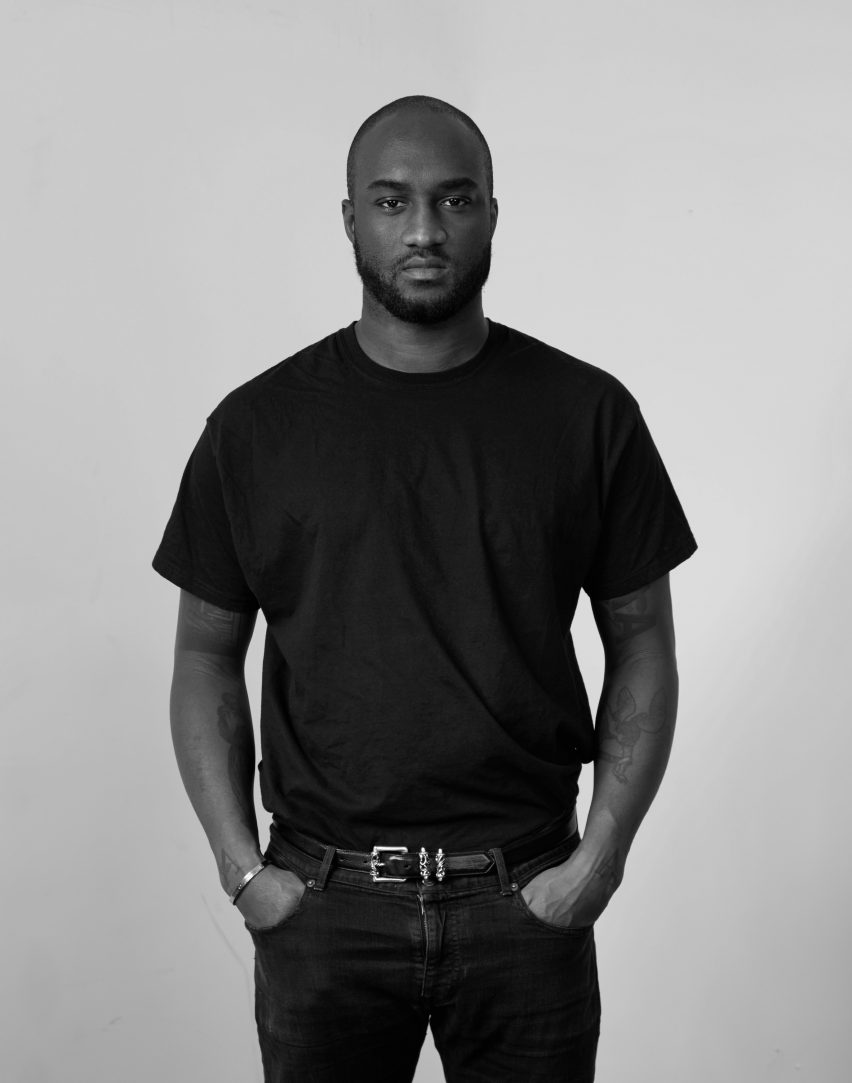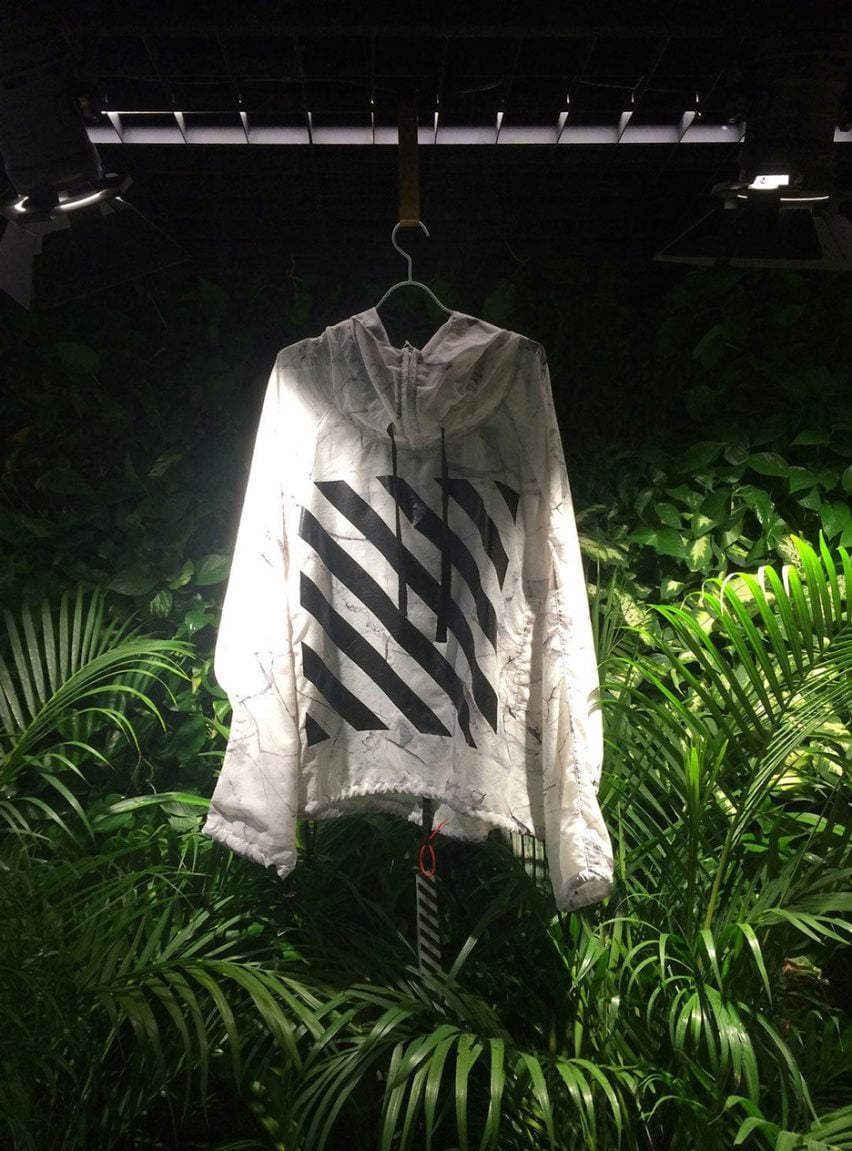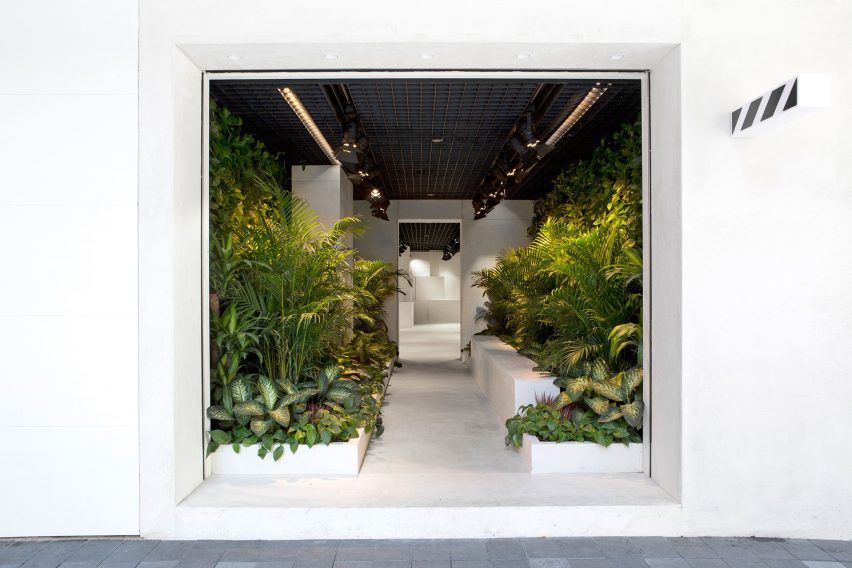
Mies van der Rohe had a lasting effect on my aesthetic, says Virgil Abloh
Fashion designer and Kanye West's creative director Virgil Abloh is the latest name to team up with IKEA. In this interview, he speaks about his cult clothing brand Off-White, the connection between streetwear and modernist architecture, and the influence of Ludwig Mies van der Rohe on his work.
Abloh is one of fashion's rising stars and a longtime collaborator of rapper Kanye West. Together they have produced music videos and tour sets. Abloh has also worked closely with artists and designers like Peter Saville and Es Devlin during his 15 years as a creative director.
He was tipped to take over from Riccardo Tisci at Givenchy, before the luxury fashion house quelled the rumours earlier this year.
Abloh's own clothing line, Off-white, has gained a cult following similar to that of brands like Vetements and Supreme since launching in 2013, and is a favourite of young influential celebrities like Kendall and Kylie Jenner, and Gigi Hadid.
"Of all those experiences, patiently working on the other projects, being inspired, meeting a lot of interesting people – that helped me form my own vision," he told Dezeen, ahead of a talk at the Rhode Island School of Design in April.

However it is the 36-year-old's latest partnership that has brought him to the attention of the furniture world. Earlier this month, IKEA revealed it will be working with Abloh to produce a collection aimed at millennials moving into their first homes.
The Chicago native studied structural engineering at the University of Wisconsin, before returning to his home city to study architecture at the Illinois Institute of Technology, for which Mies van der Rohe designed the main campus and many of its buildings.
The architect – one of the 20th century's most influential – also directed the university's architecture programme, and Abloh believes that this teaching directly influenced his tastes.
"Studying architecture in Crown Hall had a lasting effect on my aesthetic," he said. "But not only my aesthetic. The sort of thought process that went into modernism, or an international style of architecture where one aesthetic can exist in different cultures."
"That's how I think of fashion and the branding," he added.

When the IKEA partnership was announced, Abloh suggested that he might put a new spin on the brand's iconic Fratka bag – as many others have done following Balenciaga's £1,705 version released in April.
This is indicative of his way of elevating mundane items or symbols, to give them new status and create a "universal language".
It echoes his approach to designs for Off-White's clothing, recognisable for its hazard-tape striped motifs. Abloh said that his use of generic shapes and materials connects his streetwear with modernist architecture.
"It's something that's just readily available, it's almost like you can't patent it in a way," said Abloh. "But that's how I arose at that connection. A lot of that visual language was inspired by a principle of architecture."

Based in Milan, the brand currently has eight retail spaces internationally, in cities including Hong Kong, Tokyo, Toronto, Seoul and London, with a ninth coming soon.
For the majority of the store interiors, Abloh has enlisted young studio Family New York – founded by the former OMA architects behind the Plus Pool proposal for the East River. "We're like the same type of architecture students," said Abloh, who works closely with the architects to realise his vision for the spaces.
"Whether it's the overarching branding of the clothing line, which is what a brand literally is, and then the spaces – storage, retail, concepts and all those things – I work on those within Off-White."
The IKEA collaboration won't be Abloh's first foray into the furniture industry. Last year he debuted his first set of collectible pieces at Design Miami, which echoed Off-white's minimal branding.
Few details have been revealed about his affordable range, which will launch in 2019, but Abloh suggested he plans to work with students on the pieces.
"You just have to come with a unique perspective, which is actually simple," he said of his approach to creative projects. "Look at the market, see what's out there and propose something that's a point of difference."
Read an edited version of the transcript from our interview with Virgil Abloh below:
Dan Howarth: Could you tell me a bit about your background; where you came from, how you got to where you are now?
Virgil Abloh: I'm just like any other kid, growing up in the 90s as a teenager. Wanting to be a part of culture in a unique way. So I started off from being a skateboarding kid – was into hiphop and all that.
I got into formal education, studied structural engineering at University of Wisconsin in Madison and then studied architecture at Illinois Institute of Technology. Those two sort of schools of thought obviously got me into design, building buildings, how they stand up, the idea about how those two things converge.
After that I've just been in a field of creative direction for other artists, for a large part of the last 10-15 years.
Off all those experiences, patiently working on the other projects, being inspired, meeting a lot of interesting people – that helped me form my own vision.
I started a project called Off-White, which is a clothing label, but embedded in that is also an opportunity to design a number of things besides the clothing, whether it's the overarching branding of the clothing line, which is what a brand literally is, and then the spaces – storage, retail, concepts and all those things – I work on those within Off-White.
Dan Howarth: How has your background informed the fashion side of Off White?
Virgil Abloh: One of the main premises I formulated for the brand was based on modernism. The Illinois Institute of Technology is a Mies van der Rohe curriculum and campus. Studying architecture in Crown Hall has had a lasting effect on my aesthetic. But not only my aesthetic.
The sort of thought process that went into modernism, or an international style of architecture where one aesthetic can exist in different cultures – a skyscraper can be in Tokyo, London, Jakarta and have one aesthetic that marks throughout them all, with local differences.
That's how I think of fashion and the branding, with these diagonal lines that are a universal language to represent hazard, or caution or something. That became the branding on the clothing – that's what the most recognisable print is for Off-White.
But it's something that's just readily available, it's almost like you can't patent it in a way. But that's how I arose at that connection. A lot of that visual language was inspired by a principle of architecture.
A lot of Off-White's visual language was inspired by a principle of architecture
Dan Howarth: Another one of modernism's aims was for good design to be available to as many people as possible. Was that also something you wanted to achieve with the brand?
Virgil Abloh: Yeah, more so the industrial revolution that influenced the modernist aesthetic. Same as the process of making clothes in America, like streetwear – the genre of fashion that I participate in – it's made of readily available materials and things that are recognisable, much in the same way as the international style. [Modernist] architecture was influenced by readily available steel sections, that sort of correlation.
Dan Howarth: Of the artists that you've worked with, Kanye is one of the big ones. How did the relationship with him impact your brand?
Virgil Abloh: In my interviews I don't talk about his project or things like that, it makes it easier. He speaks on his projects, I don't talk about the work that I do with him.
Dan Howarth: But what you did with him must have influenced the projects that you have going on now?
Virgil Abloh: More of my sort of multitasking, we both work a lot. I work with him, I work with a number of artists that have different paces to their work or what they're trying to express, but I made my project an outlet for my views and how I think about things.
Dan Howarth: What do you think about the "see now, buy now" trend occurring in fashion at the moment?
Virgil Abloh: I've used it a bit to launch specific things. I think the rise of that sort of thought process in terms of fashion is right on par with how fashion can modernise itself to the point in which people see something to which they can buy immediately, to which that design is thought of. I'm interested in it too.
To me it's a marketing thing – it's consumer facing, figuring out when do people need to purchase something new. When is there fever to buy it. Whether it needs to be in the culture, which takes six months before they can understand it and want to participate in it, or if it's like, "Hey, I just saw that. I want it now."
Family New York and I are the same type of architecture students
Dan Howarth: There are so many fashion companies these days. How do you build a brand that's unique?
Virgil Abloh: I just make something that relates to my personal tastes. I think there is a lot of creativity happening at once, so it is hard, but is no different than anything else, or any other time period in art. I'm assuming that it was the same sort of pace.
You just have to come with a unique perspective, which is actually simple. Look at the market, see what's out there and propose something that's a point of difference.
Dan Howarth: How do you use social media as a part of the way that you work?
Virgil Abloh: That, I think, is modern. It's the way that people communicate and share ideas and trends and things exist, because of these devices to share. I use it in a way where it very much shows what's going on under the hood of the brand. It shows what I'm working on.
It's a little bit of like a magazine, if you will.
Dan Howarth: How many stores do you have for Off-White?
Virgil Abloh: About eight, in Hong Kong, Tokyo, Toronto, Seoul, London. I'm working on the ninth one now.
Dan Howarth: Do you work with different designers for each of those spaces?
Virgil Abloh: I generally work with Family New York, a small architecture firm that we've done almost all of those spaces with.
We're like the same type of architecture students. They worked at OMA and they're just starting a younger practice. I wanted to work with someone continually on ideas.